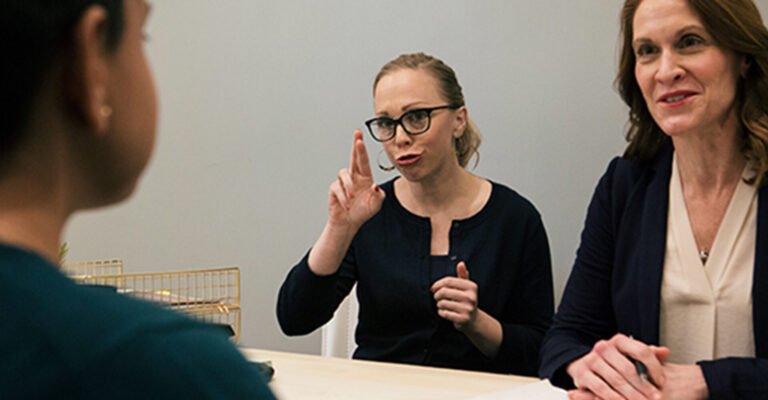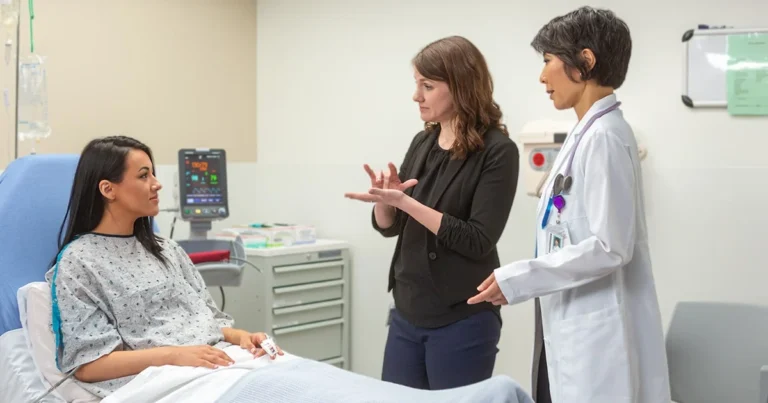ASL: A Language of Community, Culture, and Dignity
American Sign Language (ASL) is truly far more than just a communication tool. For the Deaf community in the United States, ASL is a native language, a medium of identity, a vital bridge to social connection, and a radiant cultural emblem. With millions of users, ASL reflects a distinct worldview where sound isn’t the standard. Instead, visual expression, movement, facial cues, and sheer presence are absolutely central to human connection.
ASL isn’t a mere visual copy of English. It boasts its own unique syntax, grammar, and spatial logic. ASL users create intricate “spatial maps” to assign referents, use directional hand movements to express actions, and heavily rely on facial expressions to convey tone and intent. Every raised eyebrow, every fleeting glance, or subtle body shift carries profound meaning, forming a vibrant, three-dimensional language system that’s truly alive.
Therefore, accessing information through ASL isn’t just a matter of convenience. It is absolutely essential for Deaf individuals to be fully understood, deeply respected, and truly represented.
The Deaf Community: A Distinct Culture with Its Own History and Values
Many hearing individuals often associate Deafness with a perceived lack: a lack of sound, speech, or access. But these assumptions often completely overshadow a fundamental truth. Deaf people are not broken individuals in need of repair. They are a rich cultural-linguistic community with their very own language, a proud history, and deeply cherished values.
Since the early 19th century, the Deaf community in the U.S. has diligently built their own schools, churches, clubs, theaters, poetry, storytelling, and powerful advocacy movements. What truly unites Deaf individuals isn’t the absence of sound but the powerful presence of a visual-based worldview where sign language, direct eye contact, expressive facial expressions, and keen spatial awareness are the foundations for existence, connection, and profound self-expression.
Labeling Deaf people as a disabled group often reflects a medical model, which unfortunately views difference as a problem to be fixed. In stark contrast, the Deaf community enthusiastically embraces the cultural-linguistic model, recognizing Deafness as a natural, vibrant part of human diversity. Deaf individuals don’t seek to become hearing. They passionately seek recognition, deep understanding, and equitable access to society through their native language, ASL.
This isn’t just about language; it’s about power. When Deaf individuals are forced to communicate through writing or speech—methods that fundamentally don’t belong to them—they’re sadly excluded from full participation and crucial decision-making. An English translation may simply not convey the rich emotional and contextual meaning ASL offers. But when Deaf people access information in ASL, they feel truly seen, deeply empowered, and genuinely heard.
Providing ASL interpretation instead of relying solely on captions or written text is far more than just a technical fix. It is a clear, resounding commitment to equity and inclusion. When organizations thoughtfully implement ASL services, they profoundly acknowledge Deaf individuals’ language, communication, and cultural identity. It is a concrete, powerful step toward a fairer and more inclusive society for all.
Let’s stop viewing Deafness through the limiting lens of deficiency and, instead, recognize it as an incredible asset. Not for what might be perceived as missing, but for what has been remarkably created: a rich visual culture, a dynamic language, and a resilient community thriving brilliantly against societal barriers.
ASL Interpreters: More Than Translators, They Are Cultural Bridges
To interpret ASL effectively, one must do so much more than simply sign. A professional ASL interpreter skillfully bridges two distinct worlds of sound and sight. They’re not just language specialists. They are truly invaluable cultural mediators.
A highly qualified ASL interpreter should:
Be certified by reputable organizations such as RID (Registry of Interpreters for the Deaf)—this ensures top-tier professional competence and strict ethical standards.
Be genuinely fluent in both English and ASL and possess a deep, nuanced understanding of cultural context.
Strictly adhere to ethical standards: maintaining neutrality, ensuring absolute confidentiality, and deeply respecting Deaf autonomy.
Be extensively trained in Deaf cultural norms, including:
👉 Direct eye contact is the standard, never rude.
👉 Facial expressions function as an integral part of grammar.
👉 Pauses and silence inherently carry significant meaning.
At Ladon Translation, we meticulously select our interpreters not just for their impressive credentials but for their profound cultural competence, genuine empathy, and remarkable ability to build immediate trust.

ASL in Real Life: When Language Changes Lives
Language isn’t merely a tool. For Deaf individuals, ASL is the absolute key to accessing vital education, essential healthcare, foundational justice, and their full human dignity.
Imagine a young Deaf girl stepping into her first STEM class. Complex concepts like chemical reactions, the speed of light, or quadratic functions once seemed utterly out of reach. But with an ASL interpreter right beside her, knowledge springs to life through movement, expression, and vivid visual understanding. She doesn’t just learn. She dreams, she sees herself as a scientist, an engineer, a builder of the future.
Or consider a middle-aged Deaf man recently diagnosed with cancer. Confused and scared, he struggles to grasp the doctor’s words or even ask about risks and treatment options. With a skilled ASL interpreter, he reclaims his agency. Each medical term, every therapy, and all prognoses are conveyed with crystal clarity in his native language, allowing him to make informed decisions and be an active, empowered participant in his own care.
In legal settings, ASL can mean the profound difference between justice and injustice. A Deaf woman in a custody hearing once faced daunting silence, frustrating delays, and heartbreaking miscommunication. With a qualified ASL interpreter, she can now fully engage, respond thoughtfully, and powerfully assert her rights. Justice is only truly meaningful when all parties can fully participate. For Deaf individuals, ASL is that vital access point.
In each of these powerful cases, ASL is so much more than just communication. It is the unwavering path to equity, a cherished space where Deaf people don’t have to “translate themselves” into another language but instead can express their true, authentic identity. Language becomes the fundamental right to be present, to choose, and to live life to its fullest.

Debunking Common Myths About Deaf Culture and ASL
❌ Myth: ASL is just simplified English
✅ Fact: ASL is a complete language with unique grammar and syntax.
❌ Myth: Subtitles are enough
✅ Fact: Many Deaf individuals are not fluent in written English; ASL is their first language.
❌ Myth: AI can replace interpreters
✅ Fact: Technology cannot yet replicate the nuance, cultural awareness, and flexibility of a trained human interpreter.
Using unqualified interpreters or unreliable tech can result in:
✅ Serious medical errors
✅ Profound legal injustices
✅ Painful educational exclusion
Why Investing in ASL Interpretation Is Investing in Equity
Providing ASL interpretation isn’t just about ADA compliance. It’s a powerful reflection of a deep ethical commitment:
Ensuring Deaf individuals can participate fully and meaningfully in education, healthcare, courtrooms, and the workplace.
Building invaluable trust, reducing risk, and significantly enhancing your organization’s reputation and image.
Transforming DEI (Diversity, Equity, and Inclusion) principles into tangible, impactful real-world action
Comprehensive ASL Services at Ladon Translation
We offer:
On-site and Remote Interpreting (VRI): Flexible, confidential, and convenient
Specialized ASL Interpreting: For education (IEPs, classrooms), healthcare (diagnosis, treatment), legal settings (courtrooms, immigration), and corporate environments (training, recruitment)
Video ASL Content Creation: Convert written documents into accessible ASL videos for websites, notices, forms, and rights
Deaf Culture Training and Consultation: For organizations, businesses, and public agencies
All Ladon ASL interpreters:
Hold national certification (RID or equivalent)
Have experience across multiple industries
Follow strict ethical standards and cultural guidelines
